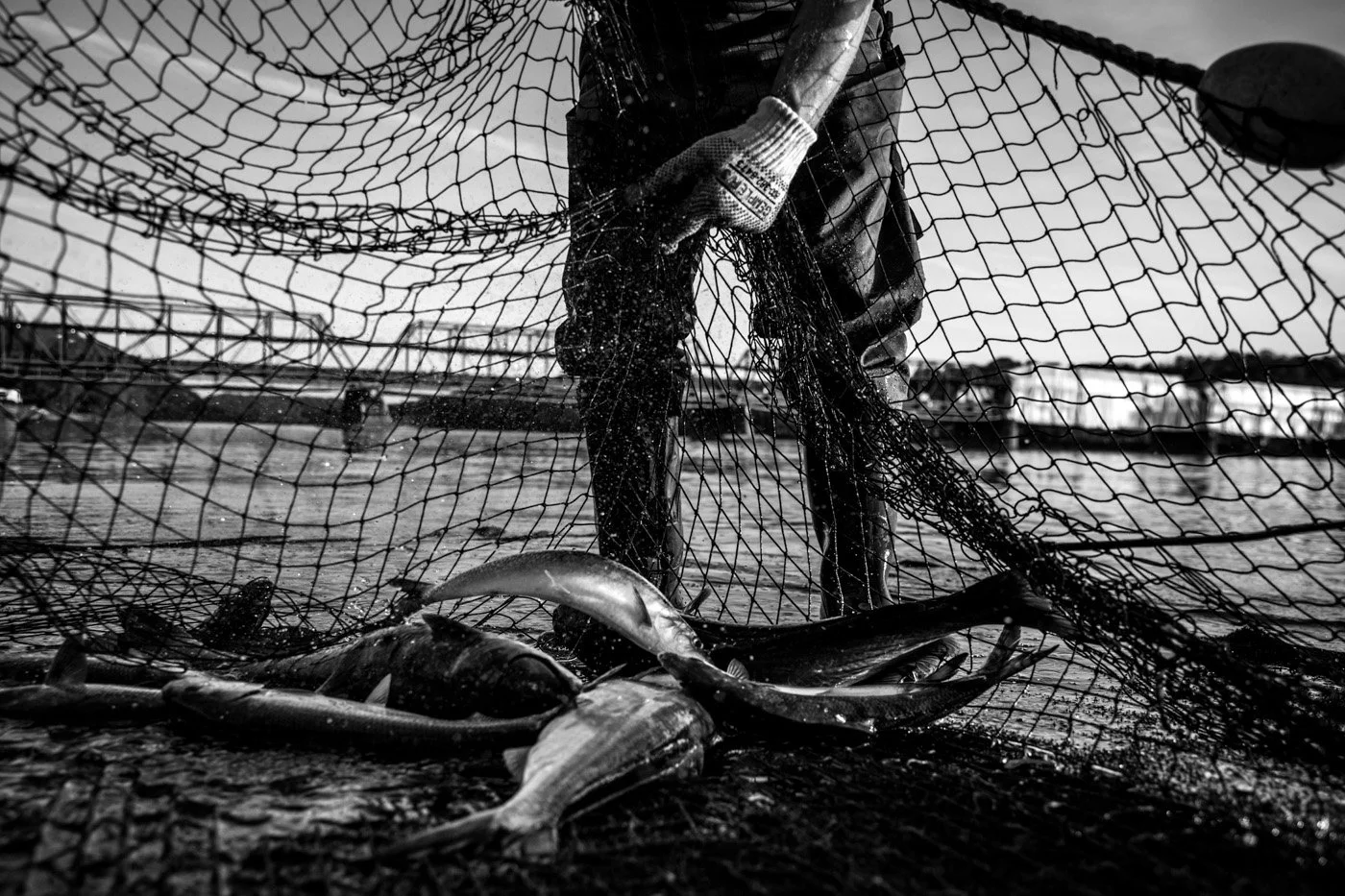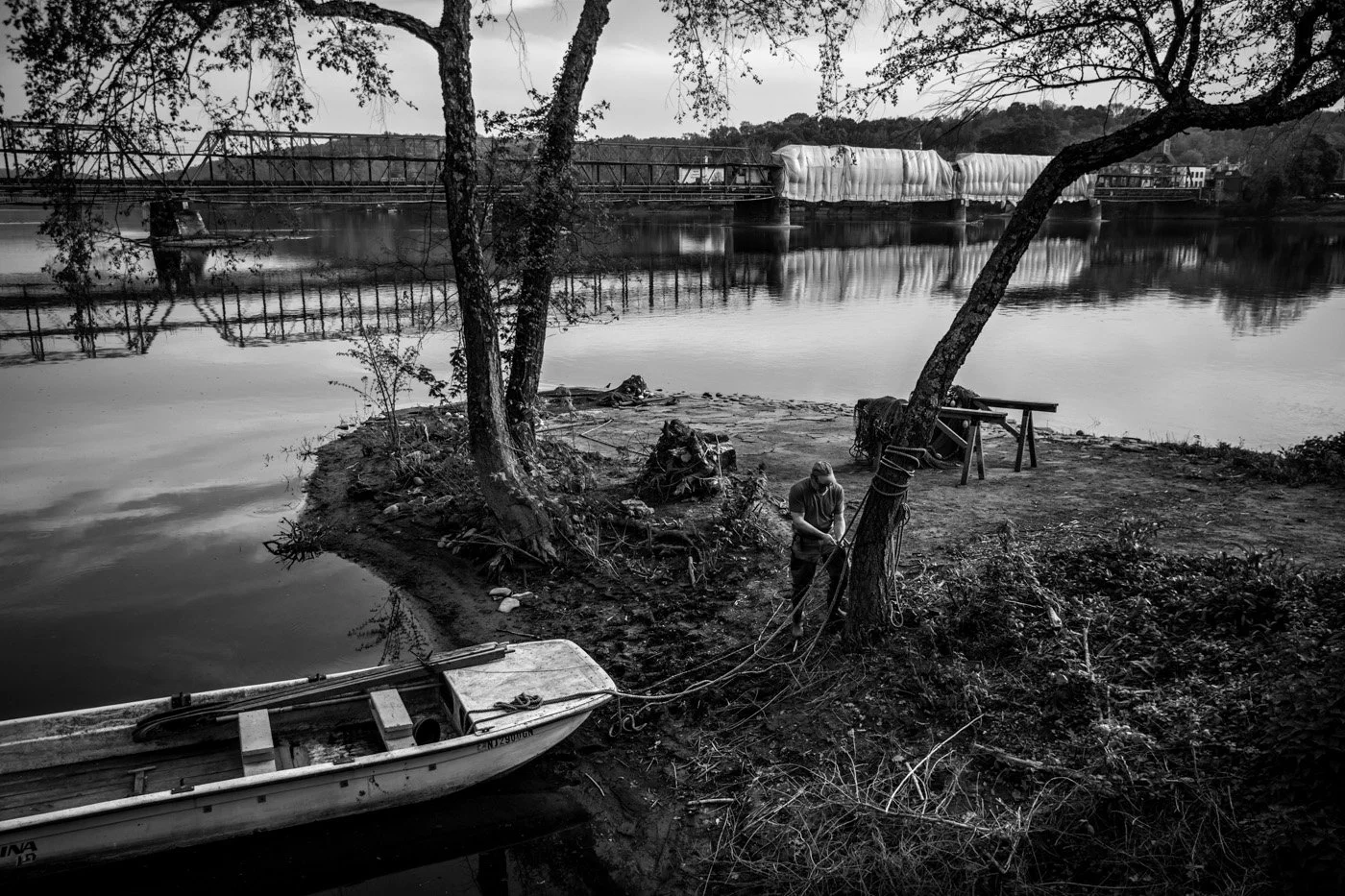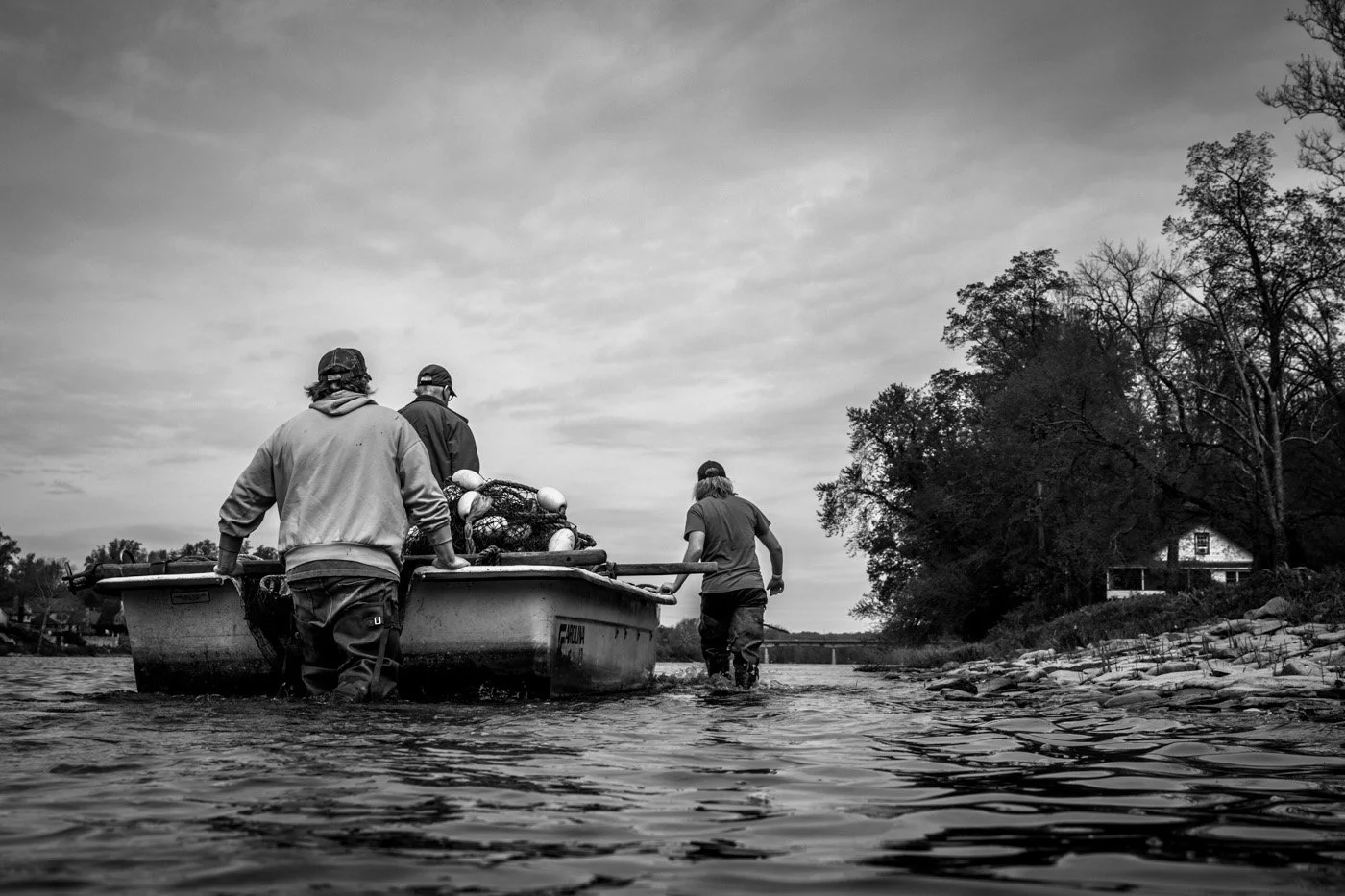Barron Bixler
The Last Fisherfolk (And the Curious Allure of the Vanishing American Shad)
Princeton, New Jersey • barronbixler.com





-
Sited on a ragged spit of land suspended in the dark embrace of the Delaware River, the Lewis Fishery in Lambertville, New Jersey is this storied waterway’s last commercial shad fishing operation. A hundred and fifty years ago, there were thousands more like it. So fecund were the historical springtime runs of American shad, Philadelphia fishmongers would boast that they could stroll across the Delaware on a carpet made of the fishes’ deep green-purple backs. There are stories, likely apocryphal, of early spring shad runs in 1778 feeding George Washington’s starving army and turning the tide of the Revolutionary War. The shad was as totemic to Philadelphia as the cod and haddock were to Boston.
About a century ago, the Delaware’s shad fishery collapsed. Shad are a mercurial, environmentally sensitive species, and chemical pollution along the river combined with overfishing and damming of spawning grounds nearly wiped them out. Even today, as those pressures have been greatly alleviated by the Clean Water Act and other interventions, the Lewis Fishery’s daily catches of shad that used to number in the hundreds or even thousands can usually be counted on two or three hands. The root cause of these recent declines remains mysterious, but scientists believe that rising ocean temperatures and other environmental stressors in marine ecosystems have only deepened the shad’s long struggle to find purchase in its natal spawning grounds.
I ask myself: why would the Lewis family—along with its entirely volunteer crew that includes a folklorist, a substance abuse counselor, a high school swimming champion and a journeyman electrician, bet year after year— decade after decade—on a game they know is rigged against them?
Over the years, I’ve worked on several projects about fishing communities from California to Hawai’i, from Chile to Brazil. I’ve found nearly all of these communities in crisis—their livelihoods imperiled as methods of harvesting fish that are both environmentally and economically sustainable have remained elusive. They have variously shared with me that they feel like the last of their kind, the last of the fisherfolk. With the Lewis Fishery, I expected a familiar story of environmental precarity, dwindling catches and economic hardship. But instead of people broken and despairing, I discovered an eclectic community bound together in ritual and rhythm, finding meaning in a shared sense of place and purpose. These pictures are dedicated to their improbable capacity to always seek light in the darkness.
-
Archival Inkjet Prints
